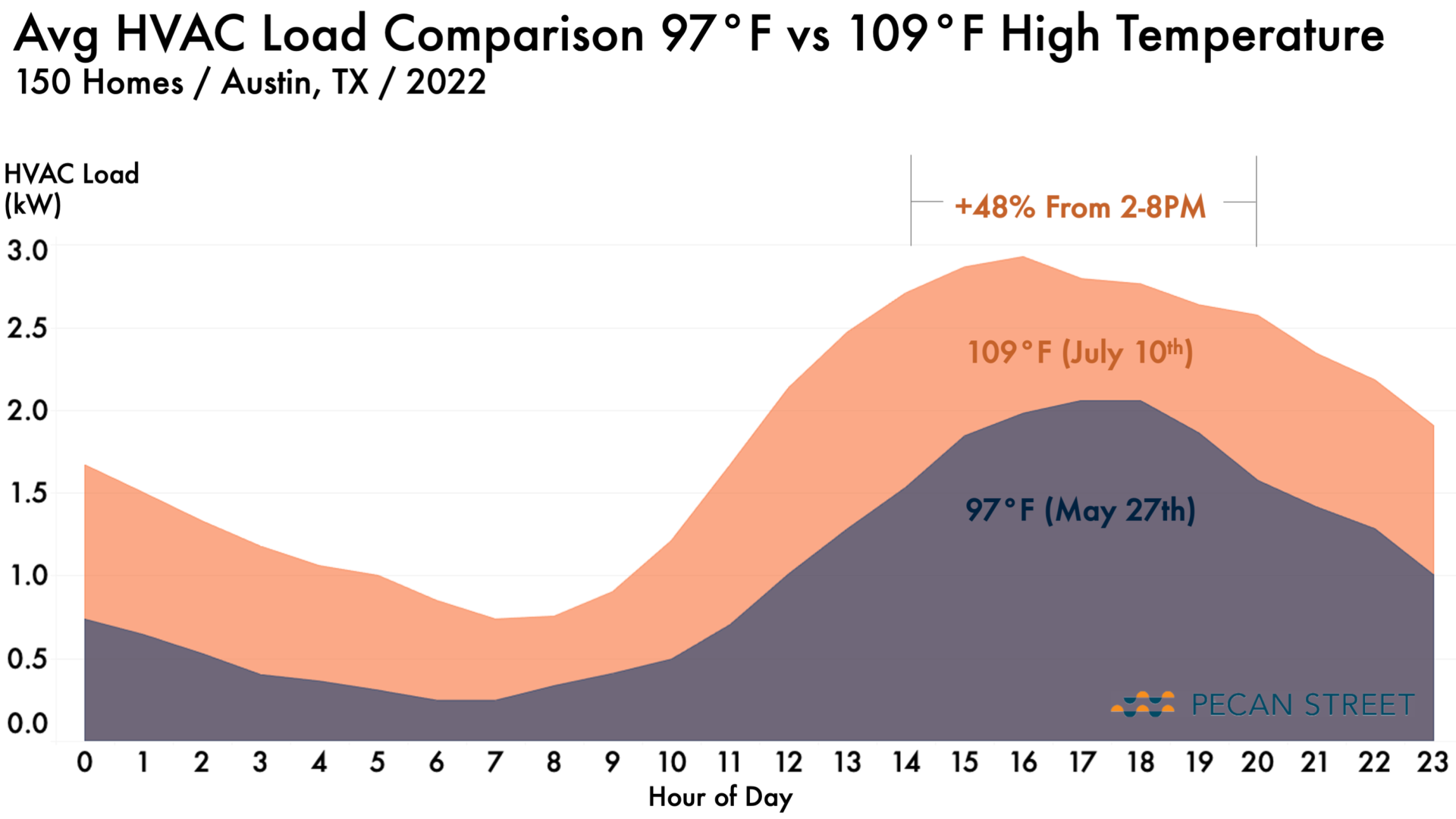July 14, 2022
By Scott Hinson, chief technology officer, Pecan Street
For the second time in a week, Texas’ grid operator (ERCOT) and local utilities yesterday issued “calls for conservation” as the state bakes under a prolonged heatwave. Among the requests: increase your thermostat setpoint to 78 degrees to reduce state-wide air conditioner load.
It’s unsurprising that air conditioning increases electricity demand during a heatwave. But it may surprise you to know just how powerful a driver it is and how close it can push the state toward a real problem.
Consider this quick example from a set of homes in Pecan Street’s research network.
We compared the average air conditioning load from a random selection of 150 homes during two hot days. The first is May 27, 2022, when the high reached 97ºF. The second is July 10, 2022, when the high reached 109ºF. That 12º difference increased air conditioning electricity demand 48% between 2 pm and 8 pm.

As troubling as this heatwave and electricity crunch is, this week shows just how much potential conservation has, especially if it were automated and incentivized by all utilities. Austin Energy, for example, provides rebates to households with Wi-Fi-enabled thermostats who agree to be part of automated demand response programs. All utilities should. And those in the conservation community think the incentives should be higher. What’s it worth to a utility to NOT have to buy extra energy on the spot market at $5,000 per megawatt?
Rooftop solar, batteries and EVs have remarkable potential to ease peak demand, too, by feeding the grid (and getting paid for it) when power plants can’t keep up. Energy efficiency measures, like better insulation and windows, can make those few hours of reduced AC use more manageable.
Amidst all the changes facing the electricity industry, one thing seems sure to continue: hotter and longer Texas summers. We have many, many tools to handle them, but we need ERCOT to embrace them and our leaders to demand them.




















